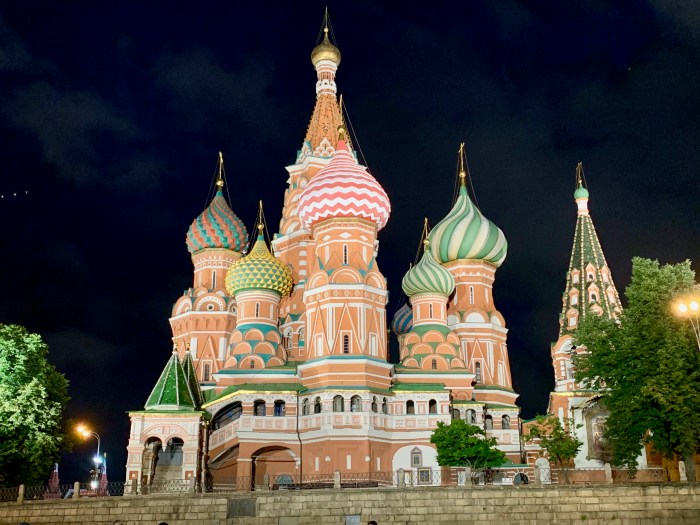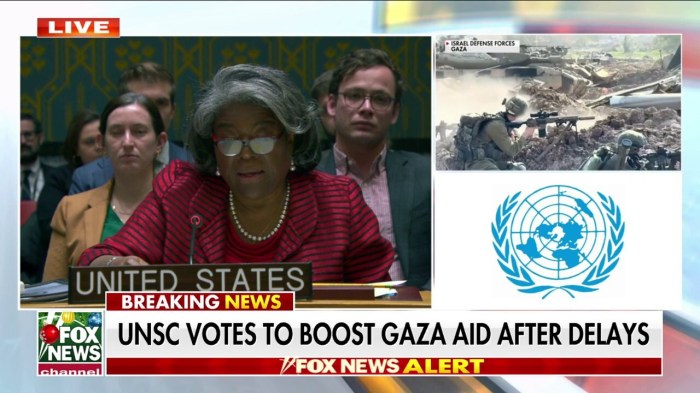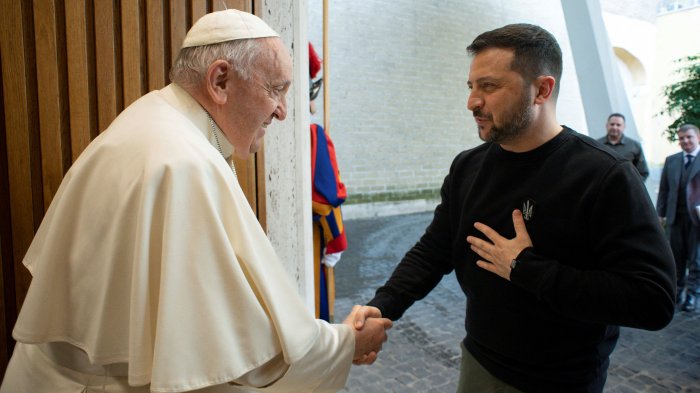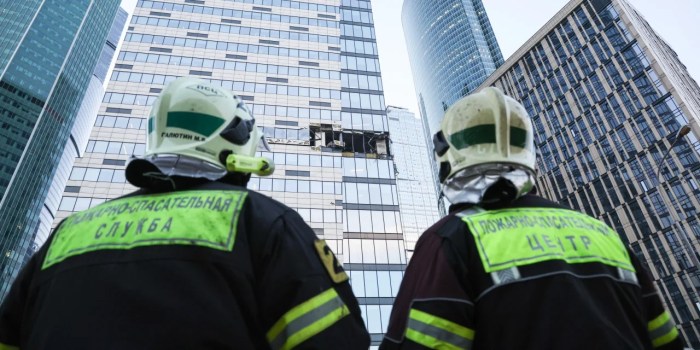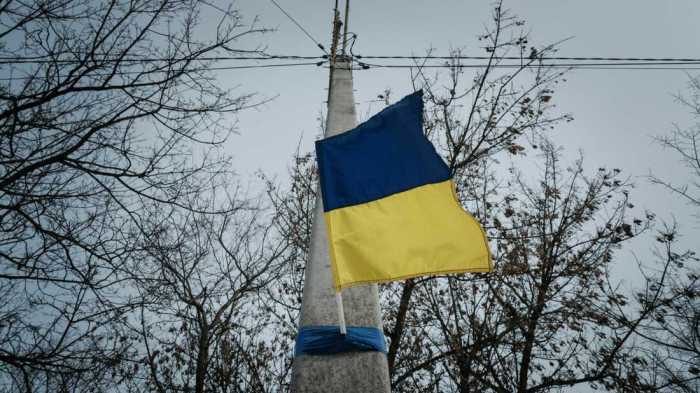
Ukraine needs a ceasefire. This complex issue requires a thorough understanding of the historical context, the potential benefits and obstacles, and the potential agreements that could lead to a resolution. We’ll delve into the geopolitical landscape surrounding the conflict, exploring the perspectives of various nations and stakeholders. A ceasefire, while not a panacea, offers a crucial path toward peace and stability, with tangible humanitarian, economic, and diplomatic advantages.
The conflict has profoundly impacted Ukraine and the region. Examining the historical context, including key events and evolving geopolitical dynamics, is essential. Analyzing the potential benefits, obstacles, and possible agreements provides a comprehensive understanding of the path forward. This discussion will also explore the impact on regional stability, international relations, and long-term solutions for reconstruction.
Historical Context of Conflict
The conflict in Ukraine, escalating dramatically in 2022, is rooted in a complex interplay of historical grievances, evolving geopolitical tensions, and competing national interests. Understanding the past is crucial to comprehending the current crisis and the diverse perspectives surrounding it. This historical overview will trace key events leading to the present situation, highlighting the evolving geopolitical landscape and the varying viewpoints of nations and stakeholders.The seeds of the current conflict were sown long before 2022, stretching back decades.
The region’s history is marked by shifts in power, influence, and national identities, making it a crucible for geopolitical struggles. Understanding this rich, often turbulent past is vital for comprehending the motivations and anxieties driving the conflict today.
Pre-2022 Geopolitical Landscape
The period leading up to 2022 witnessed a significant reshaping of Europe’s geopolitical landscape. Ukraine’s aspiration for closer ties with the West, particularly the European Union and NATO, was a key factor. This desire for integration, however, was met with resistance from Russia, which viewed these moves as a threat to its own security interests and perceived sphere of influence.
The narrative of Ukraine’s history, and its relationship with Russia, became increasingly contested.
Evolving Perspectives on the Conflict
Different nations and stakeholders hold varying perspectives on the conflict. Russia views the conflict as a necessary measure to protect its security interests and prevent the expansion of NATO, while Ukraine and its Western allies perceive it as an unprovoked act of aggression. Third-party nations often hold nuanced positions, balancing concerns about regional stability and international law. These varying interpretations have profoundly shaped the diplomatic efforts and international responses to the crisis.
Key Events Leading to the Current Situation
A series of events, stretching back decades, contributed to the escalating tensions culminating in the 2022 invasion. The dissolution of the Soviet Union in 1991 left Ukraine independent but with lingering ties to Russia. The annexation of Crimea in 2014, following a pro-Western revolution, was a significant turning point, marking Russia’s growing assertiveness in the region. The subsequent conflict in eastern Ukraine further highlighted the fragility of peace and the deep-seated divisions.
Comparison of Pre- and Post-2022 Geopolitical Maps
| Feature | Pre-2022 | Post-2022 |
|---|---|---|
| NATO Alliances | NATO presence in Eastern Europe, with a cautious approach to Ukraine’s membership. Russia expressed concerns about eastward expansion. | NATO presence in Eastern Europe, significantly strengthened in some countries bordering Russia. Ukraine’s aspirations for membership are now more complex and potentially contentious. |
| Russian Influence | Russia maintains a significant sphere of influence in Eastern Europe, though its direct control over Ukraine was not absolute. | Russia’s influence in Eastern Europe has been challenged and weakened, but it retains a degree of leverage. The conflict has dramatically altered the power balance in the region. |
| European Union Integration | Ukraine expressed desire to join the EU, but the process was slow and subject to conditions. | Ukraine’s aspirations for EU membership have been bolstered by the conflict, but the path to integration remains complex. |
| Power Dynamics | A multi-polar power structure in Europe, with Russia and the West competing for influence. | A more solidified bipolar structure in Europe, with Russia increasingly isolated in some respects, and Western alliances strengthened in others. |
The table above presents a stark contrast in the geopolitical dynamics between the pre-2022 and post-2022 landscapes. The conflict has reshaped the map of Europe, altering alliances, and impacting the balance of power in the region.
Potential Benefits of a Ceasefire: Ukraine Needs A Ceasefire
A ceasefire in Ukraine, while not a panacea for all the problems, could unlock a cascade of positive effects, primarily benefiting the Ukrainian people and the wider region. The cessation of hostilities would allow for a crucial shift in focus, moving from conflict to recovery and reconstruction. A sustained period of peace offers a unique opportunity to address the multifaceted challenges facing Ukraine, from immediate humanitarian needs to long-term economic development.
Humanitarian Benefits
A ceasefire would immediately alleviate the immense human suffering caused by the ongoing conflict. The protection of civilians is paramount. Evacuation of trapped individuals, access to humanitarian aid, and the restoration of essential services like healthcare and clean water would become possible. The potential for a decrease in civilian casualties and the prevention of further displacement are significant humanitarian gains.
A ceasefire allows for the focused delivery of aid, preventing the dilution of resources. The lives of countless Ukrainians, who have been forced to endure unimaginable hardship, would improve immediately.
Economic Advantages
The economic implications of a ceasefire extend far beyond Ukraine’s borders. A stable environment would foster investment and attract foreign capital. A cessation of hostilities would create a safer environment for business operations, allowing Ukrainian companies and international investors to operate more effectively. Agriculture, a vital sector of the Ukrainian economy, would experience a surge in productivity with the return of normalcy.
Reduced risk of disruptions to supply chains and the ability to fully utilize agricultural land would increase agricultural output. This could have a significant ripple effect throughout the global food supply.
Diplomatic Benefits
A ceasefire could open doors for renewed diplomatic engagement. It would provide a platform for dialogue and negotiation among various stakeholders, including Russia, Ukraine, and other nations. This could lead to a more stable international order in the region, fostering mutual respect and cooperation. The prospect of peace and the potential for de-escalation in tensions would provide an opportunity for international cooperation and the establishment of long-term security solutions.
The urgent need for a ceasefire in Ukraine is undeniable. While many pundits weigh in, some perspectives, like those offered by the dan bongino fbi podcaster , often add another layer to the complex discussion. Ultimately, a peaceful resolution is the only way forward for the people of Ukraine.
The focus on diplomacy would allow the involvement of international organizations to help rebuild and support a stronger Ukraine.
Potential Economic Gains
| Sector | Potential Economic Gain (Illustrative) | Explanation |
|---|---|---|
| Agriculture | Increased agricultural output by 25-30% within the first year (estimated). | Resumption of farming activities, access to international markets, and efficient use of resources would lead to increased production. |
| Energy | Reduced energy sector losses and increased capacity to generate and distribute electricity (quantifiable depending on the extent of damage). | Repair of damaged infrastructure and investment in new energy projects could bring substantial gains. |
| Tourism | Potential for a gradual return of tourism, attracting tourists from both Europe and further afield. | Restoration of historical sites and cultural attractions could bring considerable revenue to the country. The safe return of tourist infrastructure would be an essential component of this sector’s recovery. |
| Manufacturing | Resumption of manufacturing operations would lead to an increase in GDP. | The resumption of manufacturing activities will depend on the security and safety of workers. |
A ceasefire, while not a guarantee of economic recovery, offers a critical foundation for restoring Ukraine’s economy and rebuilding the region.
Obstacles to a Ceasefire
A ceasefire in Ukraine, while desirable, faces numerous formidable obstacles. Political maneuvering, entrenched military strategies, and the complex web of regional interests all contribute to the difficulty in achieving a lasting resolution. The potential consequences of a failed or temporary ceasefire are significant, impacting not only Ukraine but also its neighbors.Understanding these obstacles is crucial for evaluating the realistic prospects of a successful and sustainable peace agreement.
The sheer magnitude of the conflict, coupled with the deeply rooted political and ideological divisions, makes the path towards a ceasefire fraught with challenges.
Political Disagreements
The Ukrainian conflict is not merely a military struggle; it’s deeply intertwined with complex political disagreements. These disagreements extend beyond the immediate battlefield and touch upon fundamental issues of sovereignty, territorial integrity, and the future political landscape of Europe. Differing interpretations of international law and varying national interests further complicate negotiations. The pursuit of a ceasefire demands a willingness from all parties to compromise and find common ground on these sensitive issues.
Failure to address these political disagreements directly can lead to a fragile ceasefire that ultimately collapses under the weight of unresolved tensions.
Military Strategies and Security Concerns
Military strategies employed by both sides play a critical role in hindering a ceasefire. The ongoing deployment of advanced weaponry, the use of asymmetric tactics, and the complex logistical challenges of maintaining a front line all contribute to the difficulty of establishing a stable and lasting ceasefire. The absence of a permanent ceasefire poses significant security concerns for Ukraine and its neighbors.
The potential for renewed conflict, escalation, or the spread of the conflict into neighboring countries is a tangible risk.
Potential Security Concerns for Ukraine and Neighbors
The absence of a permanent ceasefire raises significant security concerns for Ukraine and its neighboring countries. Unresolved territorial disputes, lingering threats of cross-border attacks, and the presence of armed groups on the border could lead to a resumption of hostilities. A poorly implemented ceasefire could create a vacuum that allows for the resurgence of extremist groups or criminal organizations, threatening regional stability.
The possibility of proxy wars or the further involvement of external actors in the conflict adds another layer of complexity to the security concerns. Historical precedents of unresolved conflicts illustrate how these tensions can persist for years, impacting neighboring regions.
Potential Risks and Consequences of a Temporary or Unstable Ceasefire
A temporary or unstable ceasefire carries significant risks and consequences. It could provide a false sense of security, allowing both sides to regroup, rearm, and potentially escalate the conflict in the future. A fragile ceasefire could be easily violated, leading to renewed fighting and a loss of any progress made towards peace. A lack of clear mechanisms for enforcement and verification can make a temporary ceasefire ineffective and potentially dangerous.
The experience of previous conflicts shows that temporary ceasefires often fail to address the underlying causes of the conflict, leading to a recurrence of violence.
Comparison of Potential Ceasefire Scenarios
| Ceasefire Scenario | Pros | Cons |
|---|---|---|
| Complete and Permanent Ceasefire with Territorial Adjustments | Restores peace, reduces military tensions, stabilizes the region. | Requires significant political compromises and potential loss of territory for one or both sides. |
| Temporary Ceasefire with Limited Security Guarantees | Reduces immediate violence, provides a chance for negotiations. | Potentially fragile, leaves security vulnerabilities, could prolong the conflict if not followed by a permanent solution. |
| Regional Security Pact with a Ceasefire | Creates a framework for regional cooperation, enhances security for all involved. | Requires consensus among multiple nations, can be challenging to implement effectively. |
Possible Ceasefire Agreements
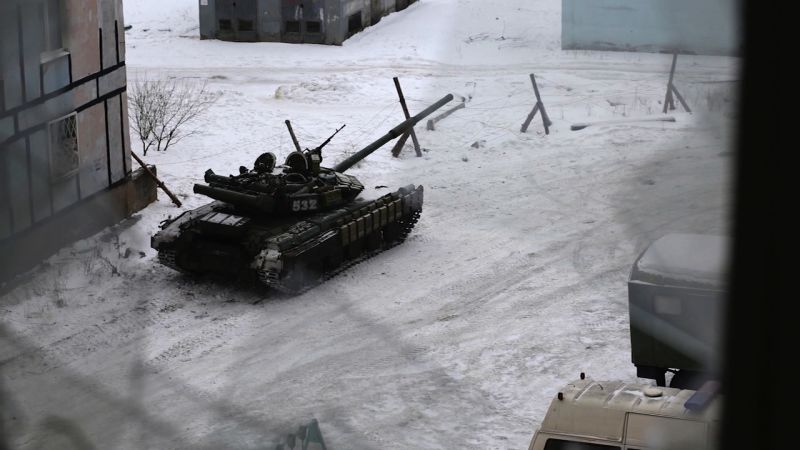
A ceasefire in the ongoing conflict in Ukraine hinges critically on the design of a workable agreement. Past experiences offer both cautionary tales and potential blueprints for a future accord. Understanding the complexities of negotiation, the potential stipulations, and the historical precedents is crucial for a successful outcome. The path to peace requires a nuanced approach that considers the interests of all parties involved.
Examples of Past Ceasefire Agreements
Ceasefire agreements, while often hailed as a step towards peace, frequently face challenges in implementation. Examining past conflicts provides valuable lessons, both positive and negative. The 1994 Dayton Agreement, which ended the Bosnian War, demonstrated the power of international mediation and the importance of clearly defined security guarantees. However, its long-term success was intertwined with the deployment of international peacekeeping forces.
Conversely, numerous ceasefires in other conflicts have failed due to lack of enforcement mechanisms, uneven commitment from parties, and the absence of a broader political solution.
Ukraine desperately needs a ceasefire. The ongoing conflict is heartbreaking, and a resolution is crucial for the well-being of all involved. Interestingly, the history of papal conclaves, as detailed in this fascinating article about papal conclaves surprising facts history , offers a unique perspective on prolonged periods of intense decision-making. Ultimately, finding a peaceful resolution for Ukraine remains the priority.
Approaches to Negotiating a Ceasefire Agreement
Successful ceasefire agreements often rely on effective mediation efforts. Third-party mediators, such as the OSCE or the UN, can facilitate communication and build trust between conflicting parties. International involvement is frequently crucial in providing legitimacy and ensuring a degree of impartiality. The involvement of neighboring countries, regional organizations, or international powers can offer crucial support in maintaining the peace.
Potential Stipulations for a Ceasefire Agreement
A comprehensive ceasefire agreement must address various critical aspects of the conflict. These stipulations should be meticulously crafted to address the underlying causes of the conflict and foster a lasting peace. Territorial adjustments, particularly concerning disputed regions, are often contentious. Troop withdrawals from specific areas, and the establishment of demilitarized zones, can reduce tensions and facilitate security.
Crucially, security guarantees, potentially overseen by international forces, are essential to ensure compliance and prevent future escalation.
Of course, Ukraine needs a ceasefire, it’s a humanitarian crisis. But the complexities of conflict often extend beyond the battlefield. For instance, the passionate portrayal of love in actor Colman Domingo’s work, as explored in actor colman domingo radical love , reminds us that even in times of war, human connection and emotion endure. Ultimately, a ceasefire is crucial for the future of Ukraine and its people.
Potential Ceasefire Agreement Provisions
| Agreement Type | Territorial Adjustments | Troop Withdrawals | Security Guarantees |
|---|---|---|---|
| Agreement 1: Partial Withdrawal | Limited territorial concessions in exchange for security guarantees. | Partial withdrawal of troops from contested zones, with monitoring mechanisms. | International peacekeeping force deployed in strategic areas, with defined mandates. |
| Agreement 2: Comprehensive Settlement | Possible return to pre-conflict borders, with adjustments based on a negotiated framework. | Complete withdrawal of troops from the entire disputed region, subject to verification. | International guarantee of borders, with specific security arrangements for both sides. |
| Agreement 3: Buffer Zone | Creation of a demilitarized zone in the disputed territory. | Deployment of troops to secure the buffer zone, with clear rules of engagement. | International monitoring of the buffer zone to prevent re-escalation. |
Impact on Regional Stability
A ceasefire in Ukraine, while offering a potential reprieve from the ongoing conflict, carries significant implications for regional stability in Eastern Europe. The potential for spillover effects on neighboring countries and the long-term impact on the global security landscape cannot be underestimated. Understanding these ripple effects is crucial for formulating effective strategies to navigate the post-conflict environment.
Potential Spillover Effects, Ukraine needs a ceasefire
The conflict in Ukraine has already demonstrated the interconnectedness of nations in the region. A ceasefire, if not carefully managed, could trigger a chain reaction of political and economic instability in neighboring countries. This is particularly relevant in countries with existing ethnic tensions or unresolved territorial disputes. The potential for refugees and displaced populations to seek shelter in neighboring countries necessitates a coordinated and compassionate response from the international community.
The flow of resources and personnel, and the potential for increased economic competition or cooperation will impact the region as a whole.
Long-Term Implications on Global Security
A ceasefire in Ukraine, if successfully implemented and maintained, could send a significant message to other nations facing similar conflicts. It could potentially foster a greater commitment to peaceful resolutions and de-escalation of tensions. However, a poorly managed ceasefire could lead to a rise in skepticism towards international diplomacy and a resurgence of armed conflicts in other parts of the world.
The global response to the conflict, and the actions of major powers, will significantly influence the long-term implications for global security.
Potential Ripple Effects on Neighboring Countries
A ceasefire in Ukraine could have significant implications for various countries, impacting their political and economic landscapes in a number of ways. The following table illustrates some potential ripple effects.
| Country | Potential Political Impacts | Potential Economic Impacts |
|---|---|---|
| Belarus | Potential for increased political instability and dependence on Russia. Increased internal pressure to shift away from close ties with Russia. | Weakening of economic ties with Russia and possible search for alternative trading partners. Potential for decreased economic growth. |
| Moldova | Increased risk of renewed conflict in Transnistria, a region with separatist tendencies. Increased pressure from Russia or pro-Russian factions. | Economic disruption due to potential border closures or reduced trade with Ukraine. Potential for increased dependency on other countries. |
| Poland | Continued influx of Ukrainian refugees and the need for humanitarian aid. Increased military spending and strategic alliances. | Economic benefits from increased trade with Ukraine and investment opportunities. Potential for increased costs associated with supporting Ukrainian refugees. |
| Romania | Potential for increased Russian influence in the region. Increased pressure on Ukraine and other bordering countries. | Increased demand for energy resources. Potential for increased trade with Ukraine. |
| Russia | International isolation and sanctions pressures. Loss of geopolitical influence. | Economic hardship from sanctions. Reduced access to international markets. |
Implications for International Relations
A ceasefire in Ukraine would have profound implications for international relations, particularly among major powers. The current conflict has already fractured alliances and strained global diplomatic efforts. The outcome, or lack thereof, will undoubtedly reshape the geopolitical landscape, influencing everything from trade agreements to military strategies.The conflict’s trajectory has highlighted the limitations of existing international mechanisms for conflict resolution and the potential for escalating tensions.
A successful ceasefire would be a significant victory for diplomacy and international cooperation, while failure would likely deepen existing divisions and possibly embolden other actors seeking to challenge the existing global order.
Potential Impacts on Major Power Dynamics
The existing power dynamics among major global players would likely shift if a ceasefire is achieved. A negotiated settlement could lead to reassessments of foreign policy strategies and potentially realign alliances. For instance, countries previously neutral in the conflict might re-evaluate their positions based on the ceasefire’s success or failure.
Role of International Organizations in Facilitating a Ceasefire
International organizations like the United Nations play a crucial role in facilitating a ceasefire agreement. Their ability to act as neutral mediators and bring together warring parties is paramount. The UN’s Security Council, in particular, holds the authority to mandate and enforce a ceasefire if necessary. Previous successful resolutions and peacekeeping missions serve as precedents for future actions.
However, the effectiveness of these organizations hinges on the willingness of member states to cooperate and uphold international law.
Consequences for International Law and Norms
The handling of the conflict in Ukraine could significantly impact international law and norms surrounding sovereignty, territorial integrity, and the use of force. If a ceasefire is not achieved, or if it is achieved under duress, it could embolden other states that might be tempted to pursue similar aggressive actions, potentially setting a dangerous precedent. Conversely, a successful, well-structured ceasefire could strengthen the principle of peaceful conflict resolution and the rule of law.
The world would observe the implications of these actions for years to come.
Impact on Country Relationships
A ceasefire agreement would likely have significant impacts on the relationships between various countries, including Russia, the USA, and the EU. The outcome of these shifts will be dependent on how the ceasefire is negotiated and implemented. The table below demonstrates potential influences.
| Country | Russia | USA | EU |
|---|---|---|---|
| Potential for Cooperation (Ceasefire Achieved) | Increased likelihood of dialogue and potential for de-escalation of tensions. A return to a more predictable diplomatic sphere. | Renewed emphasis on diplomacy and potential for cooperation on other global issues, possibly including new areas of collaboration. | Opportunity to rebuild relationships and potentially address common security concerns with Russia, albeit cautiously. Emphasis on upholding international law and norms. |
| Potential for Strain (Ceasefire Achieved but Not Fully Supported) | Continued mistrust and suspicion from the West, potentially leading to further sanctions or limitations. | Maintaining a firm stance on Russian aggression and upholding sanctions. Continued focus on supporting Ukraine. | Division within the EU on how to approach Russia. Possible divergence in policy among member states. |
| Potential for Conflict (Ceasefire Not Achieved) | Further escalation of conflict and possible further annexation of Ukrainian territories. Increased isolation. | Increased commitment to supporting Ukraine and potentially strengthening military presence in the region. | Increased sanctions against Russia and possible further economic and political consequences. Potential for further EU unity in response to Russian actions. |
Long-Term Solutions and Reconstruction
A ceasefire, while crucial, is only the first step. The true healing of Ukraine, and the prevention of future conflicts, demands a comprehensive approach that addresses the root causes of the conflict and rebuilds the nation’s infrastructure and societal fabric. This involves not just physical reconstruction, but also psychological recovery and the establishment of lasting peace.A ceasefire alone won’t mend the deep wounds inflicted by years of war.
Reconstruction efforts must go beyond simply repairing buildings and roads. They must encompass the rebuilding of trust, the revitalization of communities, and the creation of an environment where all citizens feel safe and secure. This requires a multifaceted strategy, acknowledging the economic, social, and psychological ramifications of the conflict.
Necessity of Addressing Root Causes
The current conflict in Ukraine is a complex issue with deep historical roots. Understanding and addressing these underlying issues is essential for long-term peace. This includes exploring the historical grievances, economic disparities, and political tensions that contributed to the conflict. Addressing these factors will help prevent similar situations from arising in the future.
Reconstruction Efforts Needed in Ukraine
The scale of destruction in Ukraine is immense. Reconstruction efforts must focus on several key areas. Residential areas, critical infrastructure like hospitals and schools, and essential utilities must be rebuilt. The agricultural sector, a cornerstone of Ukraine’s economy, also needs significant attention to restore productivity. These efforts must be complemented by initiatives that revitalize the country’s cultural heritage, fostering a sense of national identity and pride.
Importance of International Aid and Investment
International aid and investment are crucial for supporting Ukraine’s reconstruction. The scale of the task necessitates significant financial and material assistance from the global community. This includes providing resources for rebuilding infrastructure, supporting displaced populations, and fostering economic recovery. Examples like post-earthquake reconstruction efforts in Japan or post-war reconstruction in Germany offer valuable lessons and approaches.
Detailed Reconstruction Plan
| Area of Need | Specific Needs | Funding Sources |
|---|---|---|
| Housing | Providing temporary and permanent housing for displaced families, repairing and rebuilding damaged homes, and developing sustainable housing solutions. | International donor agencies (e.g., UN agencies, World Bank), private sector investment, and national budgets. |
| Infrastructure | Repairing and rebuilding roads, bridges, railways, and utilities (electricity, water, sanitation), and modernizing infrastructure to improve efficiency. | International development banks, national budgets, and private sector investment. |
| Education | Repairing and rebuilding schools, providing educational materials, and training teachers. | International organizations, national budgets, and private philanthropy. |
| Healthcare | Repairing and rebuilding hospitals, providing medical supplies, and training medical personnel. | International aid organizations, national budgets, and private sector contributions. |
| Agriculture | Restoring agricultural land, providing seeds and equipment, and supporting farmers. | International aid organizations, national budgets, and private sector investment. |
“Reconstruction efforts should be planned and implemented with the participation of local communities, ensuring that the needs and priorities of the affected populations are taken into account.”
Epilogue
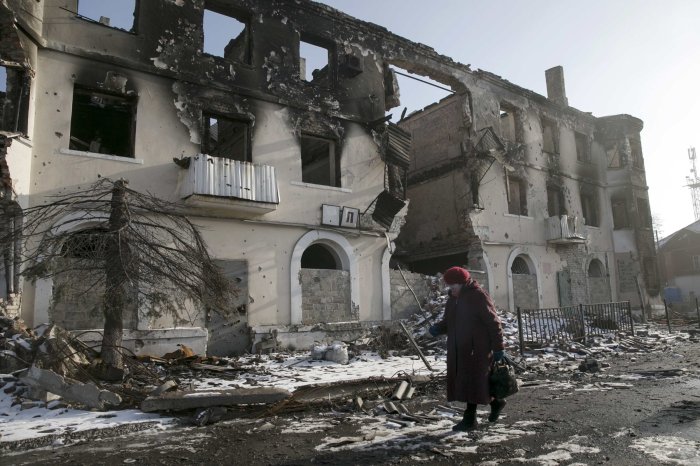
In conclusion, achieving a ceasefire in Ukraine is a complex undertaking requiring careful consideration of historical context, potential benefits, and obstacles. A thorough understanding of various agreements and their implications is critical. While a ceasefire alone won’t solve all the problems, it is a crucial step towards long-term peace and stability in the region. The need for international cooperation and long-term reconstruction efforts cannot be overstated.
The path to a resolution is fraught with challenges, but the potential benefits for all parties involved make it a necessary goal.

